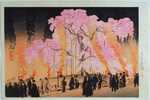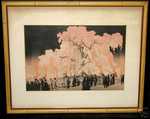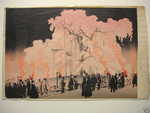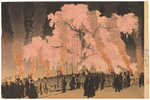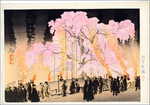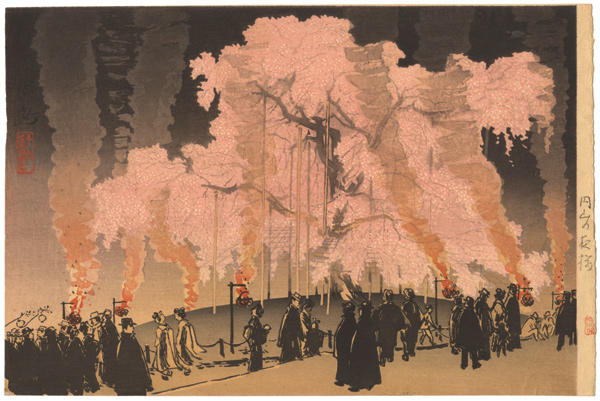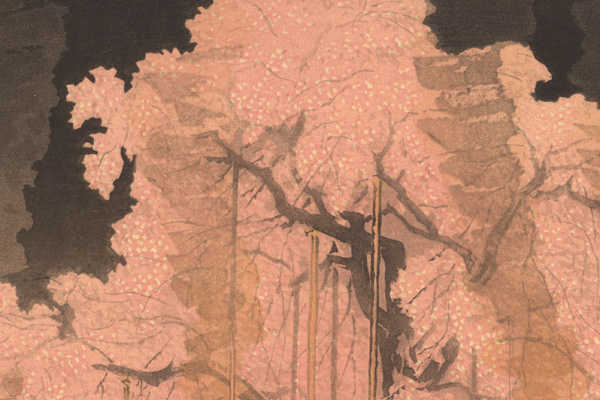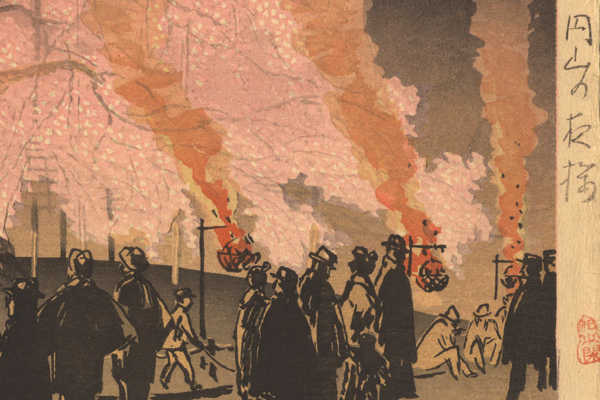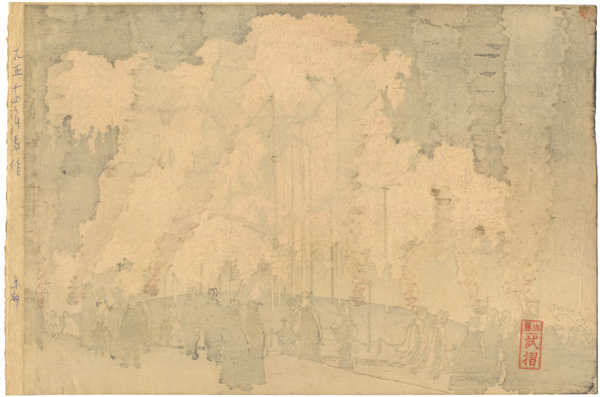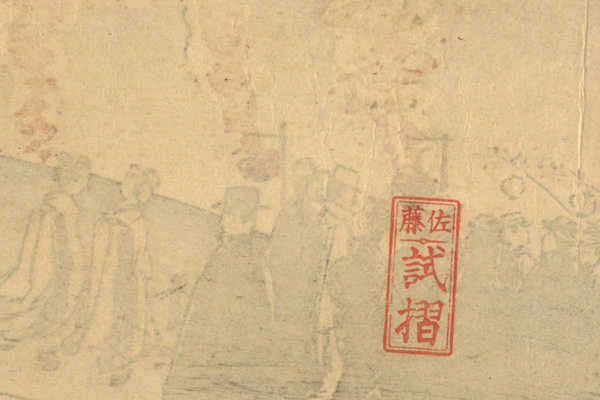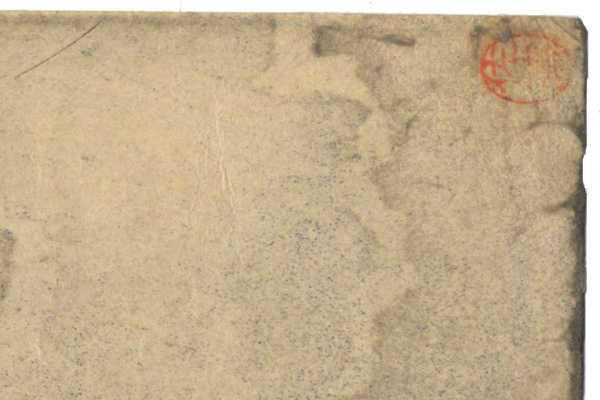| Artist Bio: |
Yoshikawa Kanpo (1894-1979) was born in Kyoto with the name Kenjiro. In 1901, he began studying Japanese-style painting under Nishibori Tosui. Kanpo also studied under the well-known artist Takeuchi Seiho (1864-1944). He entered the Kyoto Specialist School of Painting in 1914, graduating four years later. After this, Kanpo worked as an advisor on design for the Shochiku Theater company in Kyoto. Around 1922 to 1924, Kanpo worked with the Kyoto publisher Sato Shotaro on a small series of woodblock prints. These included several prints of actors, as well as a few Kyoto landscapes and bijin prints. Kanpo is significant as being one of the first Kyoto artists to produce shin hanga actor prints. His portraits are particularly unique for their rounded stylized features and muted colors. These portraits are reflective of kabuki theater in the Kamigata region (Kyoto and Osaka) where the wagoto style of acting was popular. The wagoto style was more refined and gentle, well-suited to romantic plays and realistic dramas. Actors in this style wore understated clothing and makeup. Wagoto was in sharp contrast to the highly dramatic aragato style, or rough acting, popular in Tokyo kabuki, and depicted by artists like Tadamasa Ueno. Kanpo's prints were carved by Kentaro Maeda and printed by Oiwa in limited editions of 100 or 200. Some of his designs were reprinted in a later unnumbered edition. In 1925, he exhibited prints with Miki Suizan, another artist who was published by Sato Shotaro. Both of their works were included in the Toledo Museum exhibition of 1930. After 1925, Kanpo made no other woodblock prints and produced paintings only on commission. He remained passionately interested in the Japanese kabuki theater, particuarly in its history, costumes, and traditional music. During his life, Kanpo wrote several books related to Kabuki and Japanese prints, including "Faces in Color Prints", "Contemporary Actors on the Stage", "Mirrors and Designs", "History of Changes in Sash Design", and "History of Japanese Folk Customs".
|
|



